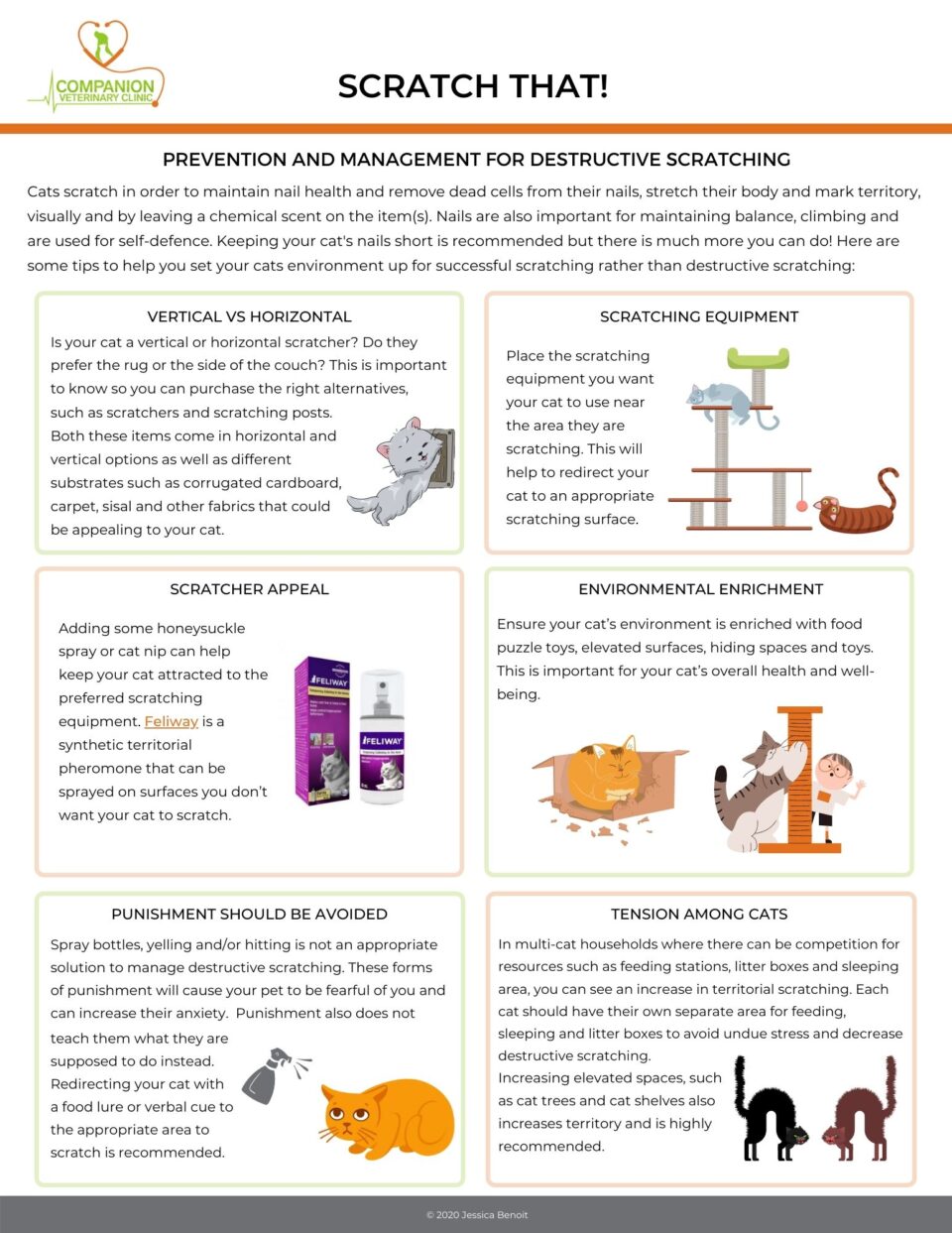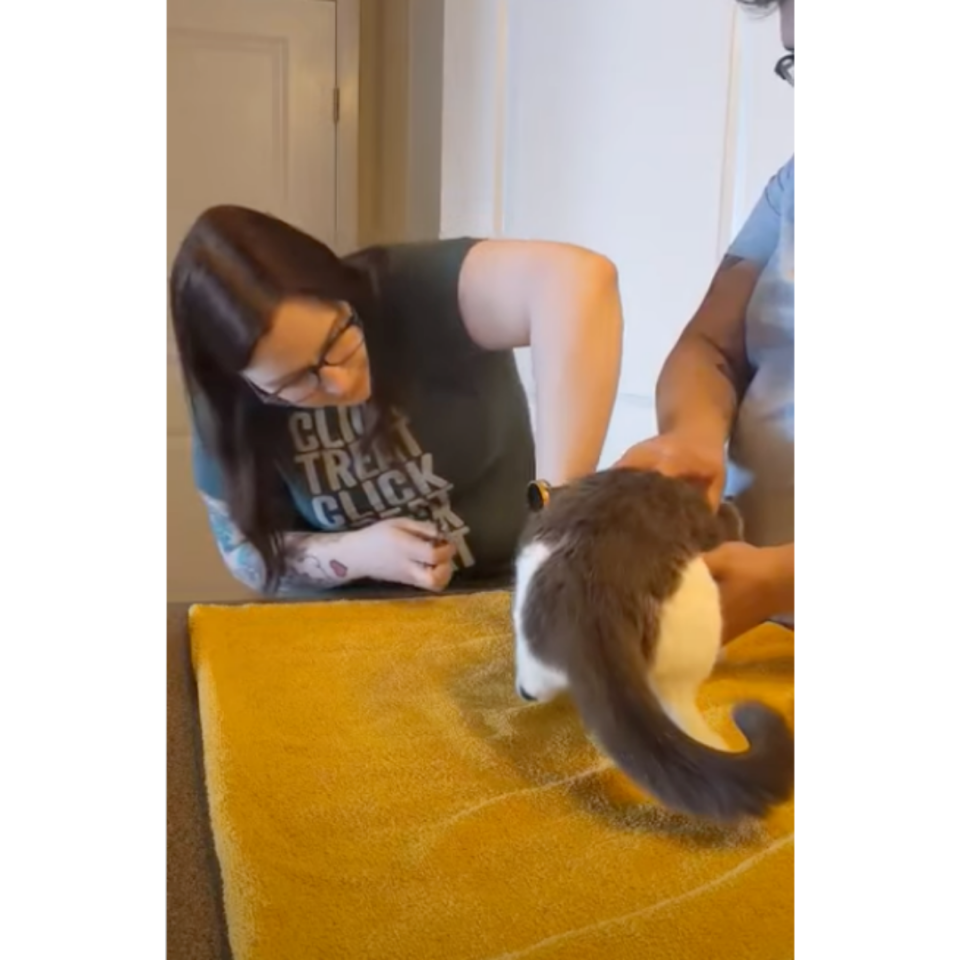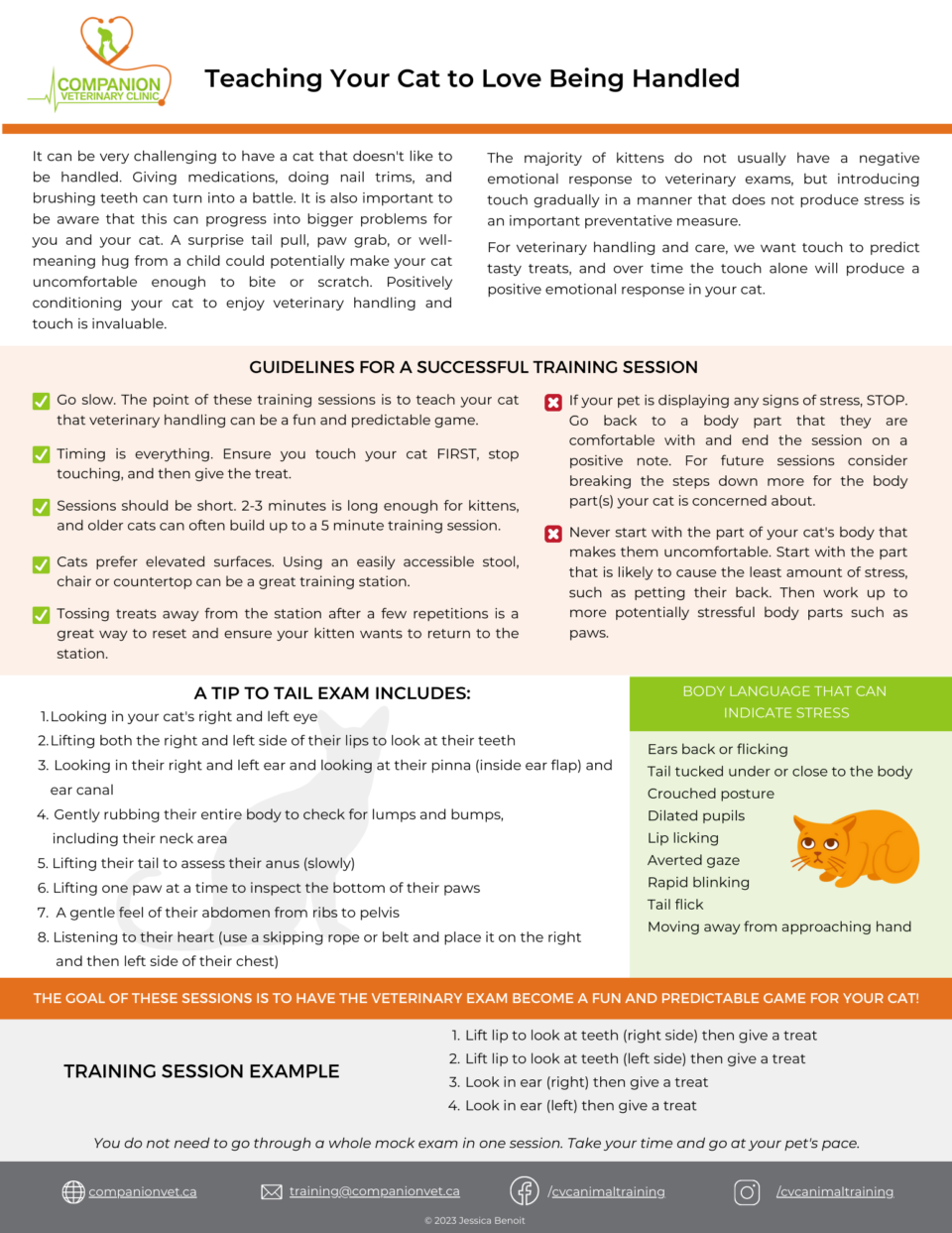Resources for Cat Owners
Resource Library
The Companion Veterinary Clinic Training Team is passionate about animal behaviour education. We’re excited to offer this new resource library to address your most frequently asked questions! Our Fear Free Certified Trainers offer professional positive, science-based methods of training and behaviour modification. Click here for more information about our virtual training classes and private training options. To be notified of new handouts as they come available, and learn valuable training tips, follow us on Instagram and Facebook.

Environmental Enrichment For Cats
Enrichment for cats means that we set up their environment in a manner that allows for them to display natural behaviours. These are behaviours such as for hunting, climbing, playing, scratching and much more. Cats living in environments that lack enrichment are more prone to stress and anxiety and this can lead to a plethora of behaviour and medical problems.
In this handout, you’ll find 10 ways to implement environmental enrichment into your cat’s day.

Carrier Training Your Cat

Prevention and Management for Destructive Scratching
Cats scratch in order to maintain nail health and remove dead cells from their nails, stretch their body and mark territory, visually and by leaving a chemical scent on the item(s). Nails are also important for maintaining balance, climbing and are used for self-defence. Keeping your cat’s nails short is recommended but there is much more you can do! Here are some tips to help you set your cats environment up for successful scratching rather than destructive scratching.
Our Certified Trainers are available for private training sessions to address these and other feline behaviour issues.

How To Trim Your Cat’s Nails
Here is Shelby and Steve demonstrating how to do a cat nail trim with food distraction. Always remember to watch your cat for signs of stress such as, twitching or tucked tails, dilated pupils, ears back, looking away from you, pulling away or vocalizations (growling, hissing, spitting) and not eating their treats are a few to watch out for.
Remember: You don’t have to trim every nail in one session.
If you are interested in desensitizing and counter-conditioning your pet to nail trims because it causes them fear/anxiety, please contact us at training@companionvet.ca for assistance.

Teaching Your Cat to Love Being Handled
Do you have a cat who doesn’t like being handled? This can be a very challenging situation! Veterinary examinations, administering medications, doing nail trims, and brushing teeth can turn into a battle. And, a surprise tail pull, paw grab, or well-meaning hug from a child could potentially result in a bite or scratch.
This is why it is worthwhile to teach your cat to be comfortable with veterinary handling. This process can build trust, resilience and cooperation.
This is a type of associative learning that can be fun for your cat! We want your cat to learn that touch predicts tasty treats, and over time the touch alone will produce a positive emotional response.
Read our handout to find out everything you need to know about conditioning your cat to love being handled, including:
- Instructions (tips and tricks!) for how to to condition your cat successfully
- Body language that can indicate stress so you know when to stop
- What a tip-to-tail exam includes, so you know what to work towards!
